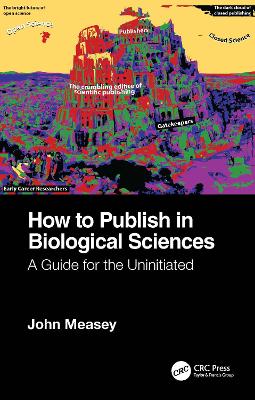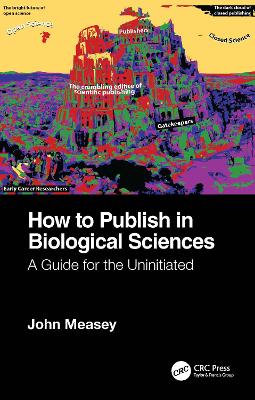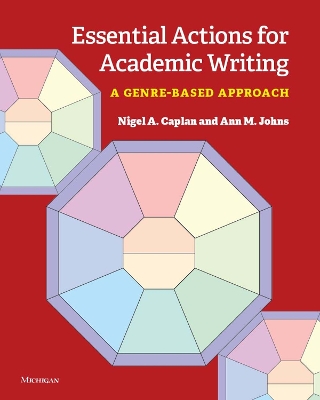How to Publish in Biological Sciences
 portes grátis
portes grátis
How to Publish in Biological Sciences
A Guide for the Uninitiated
Measey, John
Taylor & Francis Ltd
07/2022
250
Mole
Inglês
9781032116419
15 a 20 dias
512
Descrição não disponível.
Welcome
About the Author
Part I - Getting your manuscript ready for submission
Chapter 1 The transition from closed to open
Chapter 2 What is a scientific journal for?
Chapter 3 What is peer review?
Chapter 4 Transparency in publishing
Chapter 5 What can you publish?
Chapter 6 What is Impact Factor, and why is it so important?
Chapter 7 When should you be an author?
Chapter 8 Citations and metrics
Chapter 9 Growing your network
Chapter 10 Preprints
Part II - Submission, reviews and reviewing, revising and resubmitting
Chapter 11 Writing your cover letter
Chapter 12 Suggesting reviewers
Chapter 13 Choosing the right journal
Chapter 14 Open Access or a paywall for your manuscript?
Chapter 15 Submitting a paper to a journal for peer review
Chapter 16 Expectations of peer review?
Chapter 17 Receiving the editor's decision
Chapter 18 Why should an editor read your submission?
Part III - Once your paper is published
Chapter 19 Now that your manuscript has been accepted
Chapter 20 Once your paper is accepted
Chapter 21 Writing a press release
Chapter 22 Why write a popular article?
Chapter 23 Altmetrics from traditional and social media
Part IV - Further challenges in academia
Chapter 24 Is Open Access good?
Chapter 25 How to conduct peer review
Chapter 26 The problems with peer review
Chapter 27 What are predatory journals?
Chapter 28 Why did some journals go behind paywalls?
Chapter 29 Are researchers writing more, and is more better?
Chapter 30 When should you correct or retract your paper?
Chapter 31 Are you bullying or being bullied?
Chapter 32 Keeping track of your mental health
Chapter 33 Habilitation, DSc and Tenure
Last Note
Bibliography
About the Author
Part I - Getting your manuscript ready for submission
Chapter 1 The transition from closed to open
Chapter 2 What is a scientific journal for?
Chapter 3 What is peer review?
Chapter 4 Transparency in publishing
Chapter 5 What can you publish?
Chapter 6 What is Impact Factor, and why is it so important?
Chapter 7 When should you be an author?
Chapter 8 Citations and metrics
Chapter 9 Growing your network
Chapter 10 Preprints
Part II - Submission, reviews and reviewing, revising and resubmitting
Chapter 11 Writing your cover letter
Chapter 12 Suggesting reviewers
Chapter 13 Choosing the right journal
Chapter 14 Open Access or a paywall for your manuscript?
Chapter 15 Submitting a paper to a journal for peer review
Chapter 16 Expectations of peer review?
Chapter 17 Receiving the editor's decision
Chapter 18 Why should an editor read your submission?
Part III - Once your paper is published
Chapter 19 Now that your manuscript has been accepted
Chapter 20 Once your paper is accepted
Chapter 21 Writing a press release
Chapter 22 Why write a popular article?
Chapter 23 Altmetrics from traditional and social media
Part IV - Further challenges in academia
Chapter 24 Is Open Access good?
Chapter 25 How to conduct peer review
Chapter 26 The problems with peer review
Chapter 27 What are predatory journals?
Chapter 28 Why did some journals go behind paywalls?
Chapter 29 Are researchers writing more, and is more better?
Chapter 30 When should you correct or retract your paper?
Chapter 31 Are you bullying or being bullied?
Chapter 32 Keeping track of your mental health
Chapter 33 Habilitation, DSc and Tenure
Last Note
Bibliography
Este título pertence ao(s) assunto(s) indicados(s). Para ver outros títulos clique no assunto desejado.
Self help books;PhD studies;Academic writing;Academic publishing;Open Access;Blockchain;Biological Sciences;Teaching in Higher & Further Education;Philosophy of Education;DORA;Editorial Management Systems;OA Publishing;ORCID;Wo;Uninitiated;Upload;Follow;Conduct Peer Review;APC;Preprint Server;Hybrid OA;Impact Factor;Higher Impact Factors;Cope;QR Code;Green OA;Open Access Model;Desk Reject;Key Words;Predatory Publication;Open Access Fees;Associate Editor;Predatory Journals;National Academy
Welcome
About the Author
Part I - Getting your manuscript ready for submission
Chapter 1 The transition from closed to open
Chapter 2 What is a scientific journal for?
Chapter 3 What is peer review?
Chapter 4 Transparency in publishing
Chapter 5 What can you publish?
Chapter 6 What is Impact Factor, and why is it so important?
Chapter 7 When should you be an author?
Chapter 8 Citations and metrics
Chapter 9 Growing your network
Chapter 10 Preprints
Part II - Submission, reviews and reviewing, revising and resubmitting
Chapter 11 Writing your cover letter
Chapter 12 Suggesting reviewers
Chapter 13 Choosing the right journal
Chapter 14 Open Access or a paywall for your manuscript?
Chapter 15 Submitting a paper to a journal for peer review
Chapter 16 Expectations of peer review?
Chapter 17 Receiving the editor's decision
Chapter 18 Why should an editor read your submission?
Part III - Once your paper is published
Chapter 19 Now that your manuscript has been accepted
Chapter 20 Once your paper is accepted
Chapter 21 Writing a press release
Chapter 22 Why write a popular article?
Chapter 23 Altmetrics from traditional and social media
Part IV - Further challenges in academia
Chapter 24 Is Open Access good?
Chapter 25 How to conduct peer review
Chapter 26 The problems with peer review
Chapter 27 What are predatory journals?
Chapter 28 Why did some journals go behind paywalls?
Chapter 29 Are researchers writing more, and is more better?
Chapter 30 When should you correct or retract your paper?
Chapter 31 Are you bullying or being bullied?
Chapter 32 Keeping track of your mental health
Chapter 33 Habilitation, DSc and Tenure
Last Note
Bibliography
About the Author
Part I - Getting your manuscript ready for submission
Chapter 1 The transition from closed to open
Chapter 2 What is a scientific journal for?
Chapter 3 What is peer review?
Chapter 4 Transparency in publishing
Chapter 5 What can you publish?
Chapter 6 What is Impact Factor, and why is it so important?
Chapter 7 When should you be an author?
Chapter 8 Citations and metrics
Chapter 9 Growing your network
Chapter 10 Preprints
Part II - Submission, reviews and reviewing, revising and resubmitting
Chapter 11 Writing your cover letter
Chapter 12 Suggesting reviewers
Chapter 13 Choosing the right journal
Chapter 14 Open Access or a paywall for your manuscript?
Chapter 15 Submitting a paper to a journal for peer review
Chapter 16 Expectations of peer review?
Chapter 17 Receiving the editor's decision
Chapter 18 Why should an editor read your submission?
Part III - Once your paper is published
Chapter 19 Now that your manuscript has been accepted
Chapter 20 Once your paper is accepted
Chapter 21 Writing a press release
Chapter 22 Why write a popular article?
Chapter 23 Altmetrics from traditional and social media
Part IV - Further challenges in academia
Chapter 24 Is Open Access good?
Chapter 25 How to conduct peer review
Chapter 26 The problems with peer review
Chapter 27 What are predatory journals?
Chapter 28 Why did some journals go behind paywalls?
Chapter 29 Are researchers writing more, and is more better?
Chapter 30 When should you correct or retract your paper?
Chapter 31 Are you bullying or being bullied?
Chapter 32 Keeping track of your mental health
Chapter 33 Habilitation, DSc and Tenure
Last Note
Bibliography
Este título pertence ao(s) assunto(s) indicados(s). Para ver outros títulos clique no assunto desejado.
Self help books;PhD studies;Academic writing;Academic publishing;Open Access;Blockchain;Biological Sciences;Teaching in Higher & Further Education;Philosophy of Education;DORA;Editorial Management Systems;OA Publishing;ORCID;Wo;Uninitiated;Upload;Follow;Conduct Peer Review;APC;Preprint Server;Hybrid OA;Impact Factor;Higher Impact Factors;Cope;QR Code;Green OA;Open Access Model;Desk Reject;Key Words;Predatory Publication;Open Access Fees;Associate Editor;Predatory Journals;National Academy







